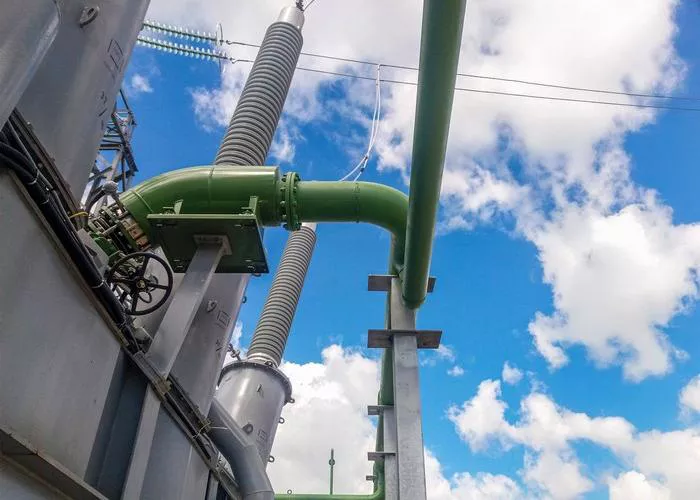Electrical transformers are essential components in power distribution and transmission systems. They enable voltage conversion, ensuring efficient energy transfer across various applications. Among the different types of transformers, compact transformers have gained popularity due to their space-saving design, efficiency, and adaptability to modern electrical infrastructure.
This article explores the fundamental concepts of compact transformers, including their working principles, applications, benefits, and challenges. By the end of this discussion, readers will have a comprehensive understanding of why compact transformers are essential in today’s electrical industry.
What is a Compact Transformer
A compact transformer is a type of transformer designed with reduced physical size and weight while maintaining its electrical capacity and efficiency. These transformers are particularly useful in applications where space is limited, such as urban power distribution, industrial facilities, renewable energy systems, and transportation networks.
Compact transformers achieve their reduced size through advancements in materials, cooling mechanisms, and innovative design techniques that enhance power density without compromising performance.
Working Principle of Compact Transformers
Like conventional transformers, compact transformers operate on the principle of electromagnetic induction. When an alternating current (AC) flows through the primary winding, it creates a magnetic field in the transformer core. This magnetic field induces a voltage in the secondary winding, enabling voltage step-up or step-down conversion.
To achieve compactness, these transformers incorporate:
High-efficiency core materials (such as amorphous metal or nanocrystalline alloys) to reduce core losses.
Advanced winding techniques that optimize coil arrangement and minimize resistance.
Efficient cooling systems (such as forced air, oil-immersed, or dry-type cooling) to maintain performance within a smaller enclosure.
Types of Compact Transformers
Dry-Type Compact Transformers
These transformers use air or resin-encapsulated windings instead of oil for insulation and cooling. They are widely used in indoor environments due to their fire-resistant and environmentally friendly nature.
Oil-Immersed Compact Transformers
Oil-immersed transformers use insulating oil for cooling and insulation. The compact design optimizes oil circulation, ensuring effective heat dissipation in limited spaces.
Cast-Resin Compact Transformers
Cast-resin transformers offer excellent moisture resistance and are commonly used in humid environments, such as coastal regions and underground substations.
Pad-Mounted Compact Transformers
These are self-contained units designed for underground or surface-level installation in urban power distribution networks.
Pole-Mounted Compact Transformers
These compact units are mounted on poles for overhead power distribution, reducing land footprint and enhancing accessibility.
Applications of Compact Transformers
Compact transformers are widely used across various industries due to their space-saving benefits and high efficiency. Some key applications include:
Urban Power Distribution
Used in underground substations and congested city environments where space constraints limit the use of conventional transformers.
Industrial Facilities
Found in manufacturing plants, mining operations, and refineries where optimized energy distribution is required.
Renewable Energy Systems
Integrated into solar and wind energy farms to manage voltage regulation and step-up conversion for grid integration.
Transportation Infrastructure
Utilized in railway electrification, airports, and electric vehicle (EV) charging stations.
Commercial Buildings & Data Centers
Provides efficient power distribution within high-rise buildings, hospitals, and IT facilities where space is a premium.
Military and Defense Applications
Deployed in military bases, naval ships, and field operations requiring rugged and compact power solutions.
Advantages of Compact Transformers
Space Efficiency
Compact transformers require less installation space, making them ideal for urban areas and constrained environments.
Improved Energy Efficiency
The use of advanced materials and optimized designs minimizes energy losses, reducing operational costs.
Enhanced Safety and Reliability
Dry-type and cast-resin designs offer fire resistance and moisture protection, increasing longevity and safety.
Lower Maintenance Requirements
Many compact transformers are designed for minimal maintenance, reducing downtime and operational expenses.
Environmental Friendliness
Some models eliminate the use of oil or hazardous substances, making them eco-friendly alternatives.
Ease of Installation
Their lightweight and modular construction simplify transportation and installation processes.
Challenges and Limitations
Despite their benefits, compact transformers also present some challenges:
Higher Initial Cost
Advanced materials and design enhancements may lead to higher upfront costs compared to conventional transformers.
Cooling Constraints
Due to reduced size, managing heat dissipation effectively can be challenging in high-power applications.
Limited Customization
Standardized compact designs may not always meet the specific requirements of certain industrial applications.
Load Limitations
Extremely high-capacity transformers may require traditional designs to accommodate heavy loads efficiently.
Conclusion
Compact transformers play a crucial role in modern power distribution, offering space efficiency, enhanced reliability, and improved energy performance. Their diverse applications in urban infrastructure, renewable energy, industrial settings, and transportation highlight their significance in an evolving electrical landscape.
As technology advances, the continued innovation in materials, cooling methods, and smart monitoring systems will further enhance the efficiency and sustainability of compact transformers. Investing in these high-performance transformers is essential for meeting the growing energy demands while minimizing environmental impact.
For industries and power utilities, adopting compact transformer solutions ensures optimized energy distribution, reduced operational costs, and a more resilient electrical network. With the rapid expansion of smart grids and renewable energy systems, compact transformers will remain a fundamental component of future power infrastructure.

